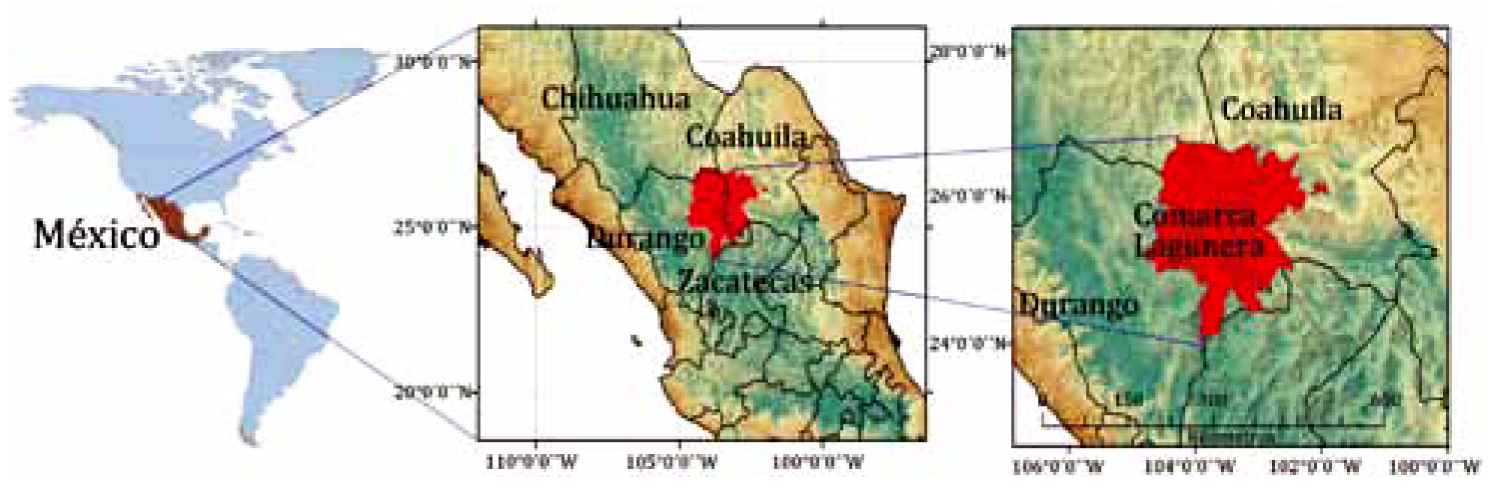Determination of blue water footprint in forages crops from irrigation disctrict 017, Comarca Lagunera, Mexico
Keywords:
virtual water, water productivity, water efficiency, water footprintAbstract
The aim of this work was the determination of the blue water footprint in forage crops from DR-017 "Comarca Lagunera", México. By means of productivity and efficiency mathematical models were used to estimate the blue water footprint of forages crops. The results show that forages occupied 45% of the total agricultural area using 94,7% of groundwater, generating 33% of the Gross Value Production. Physical productivity rates were on average 252 L kg-1 (forage sorghum 181 L kg-1, forage oats 413 L kg-1 alfalfa L kg- 1). Income per m3 was US$ 0.04 m-3 on average (US$ 0.94 m-3 in forage maize, US$ 0.05 m-3 alfalfa forage). The social efficiency indicator showed in average 0.048 jobs per hectometer (0.037 jobs hm-3 in alfalfa and 0.076 jobs hm-3 in rye grass). Finally, under the same crop y market conditions the minimum amount for a viable operation (break-even point) was 39.02 t ha-1. In conclusion, the production of corn and sorghum forage in the region was highly efficient and productive compared to other forage crops which resulted in lower blue water footprint.

Downloads
Published
Issue
Section
License
Aquellos autores/as que tengan publicaciones con esta revista, aceptan las Políticas Editoriales.


